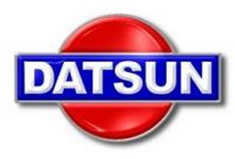
Published 2007 Updated 2018
Front brakes on the SPL/SRL 1965-1970 are disc brake of the Dunlop MKII design. The earlier cars 1964 and before came with drums all around. The assembly consists of a hub mounted rotor, a double sided caliper, and brake pads. There is no difference between early and late front brakes. If the calipers go bad-as they do from prolonged sitting-replacement is costly.
The caliper consists of two pistons one mounted to each side of the caliper body. These pistons tend to get rusted and pitted destroying the rubber seals. Once the seals are gone you will loose brake fluid rapidly rendering your front brakes useless. The recommendation is to replace the fluid periodically. Brake fluid has a natural tendency to gather moisture which in turn promotes rust. The caliper pistons can either be re-sleeved or new ones fitted. I had the rear brake cylinders re-sleeved with stainless inserts by Karp and have never had a problem since. The caliper pistons are still available for around $80.00 plus dollars a piece. Take that times four and it adds up real quick. You can still purchase caliper repair kits from Nissan for round $50 and change.
There is a plastic coating on the crossover tubes. Remove it as it promotes rust and the early demise of the metal tubing.
Rotors are not cheap either and average around $200. New rotors are approximately .433" thick with a minimum thickness of.413". If you replace pads and still have problems stopping, suspect worn rotors. Brakes is one area you do not want to cut corners on or put off. You gotta be able to stop.
There is a single rubber flexible brake line feeding each caliper.
Replacing rotors:break lugs loose, jack up front of car, put on jack stands. Remove lugs, tire/rim. Remove the dust cover from the spindle, remove cotter pin and nut. Loosen and remove the two bolts holding the brake caliper assembly on. Pull the hub/rotor assembly off of the spindle. I then place the hub/rotor in a vise using brass inserts to protect the rotor from the vise jaws. Break the four bolts holding the rotor to the hub. Use a brass drift to separate the hub from the rotor working your way around. Now is a great time to check/replace the wheel bearings. If they don't need replacing at least repack them with grease. Attach the new rotor to hub. Reassemble in the reverse order of removal. Tighten nut to spindle snugly and then back off 1/4 turn.
Replacing brake pads: break lugs loose, jack up front of car, put on jack stands. Remove lugs, tire/rim. Remove the single bolt from the keeper plate at the top of the caliper body. Use an awl or a similar round object to remove the brake pads. 6mm or .24 inches is the minimum thickness for the pads. Thoroughly clean the exposed areas. Use a suitable tool to return the pistons to the point the new pads will slide into place. Install the keeper plate and bolt. Replace the tire/rim and go for a test run. A tip on the front brake pads is to sand the sides down a bit so they slide in and out more smoothly. If you do not do that the pads are so tight they tend to stick and not operate properly.
Replacing caliper pistons: break lugs loose, jack up front of car, put on jack stands. Remove lugs, tire/rim. Remove brake tube from brass junction block. Loosen and remove the two bolts holding the brake caliper assembly on. Remove both pistons assemblies from the caliper body. Install new pistons assemblies with new crossover tubes. Be careful when fitting new crossover tubes as they are threaded differently and cross threading can occur. If it will not go together easily-do not force it. Assemble other components in reverse order of removal. Click here for the old brake bleeding method! An alternate gravity method is described by Dave Kaplan!
Brake Lines: When installing the metal brake lines on the front calipers note that the thread lengths are different; one end of the brake line is short and the other is long. The pistons also have a short end and long end. If the short end of the brake line is attached to the long end of the piston, the line will not connect tightly to the piston and you will leak brake fluid. Make sure your brake line or piston is not reversed.
That about covers the front brakes. They are a pretty basic design and relatively easy to maintain. Parts are available from our vendors.
